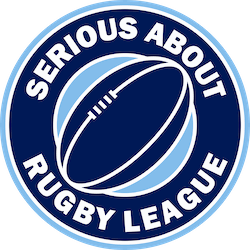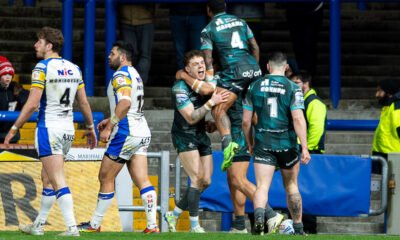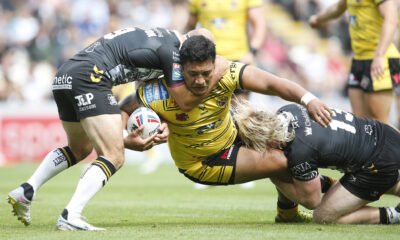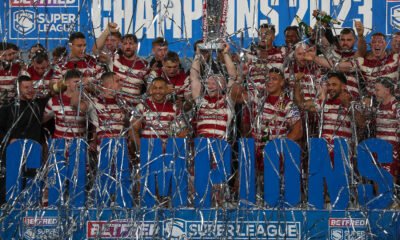
After over one-hundred years of Rugby League being played in Britain, the dawning of the 102nd season ushered in a new era for the sport.
A huge injection of money and a lucrative TV deal being struck with Sky Sports enabled the game to be available to a much larger audience than it had been previously. The game would now be played in the summer and would include the first ever European team to play in a British League. Intentions for Super League expansion were made very clear. The first game of the season was played in Paris at the Stade Sebastien Charlety Stadium in front of 17,873 where Paris Saint-Germain defeated Sheffield Eagles 30-24, highlighting the expansionist ideologies of Super League executives.
There was also the hope to generate interest in other foreign markets besides Europe, such as the Americas and Asia and some rule changes, such as the try scoring team kicking off after their conversion attempt to make it more fair, were done to enhance this. Now of course, American will have their own professional league kicking off in June (Covid dependent), and whilst it’s been many years from that first inaugural season of Super League, Rugby League has been in North America for a lot longer than people may think, even if it has been mostly at an amateur level. The influence of Super League and the NRL in this are clear.
Rugby League in Australia would change too. The year after Super League I, the newly re-branded NRL would kick-off ending the messy Super League broadcasting war between the Australian Super League and Australian Rugby League. This was a further indication of the dramatic shifts that were occurring in the world of Rugby League. But what teams were included in that first historic Super League season and how did they fare? (Note: Teams are listed in order of position at the end of the season- Played/Won/Draw/Lost/Points).
St Helens: Pld- 22/ W- 20/ D- 0/ L- 2/ P- 40
The first league leaders of Super League were coincidentally the current Super League Champions. Wigan were the pinnacle of the sport and had been for many years. This victory marked the end of the reign of Wigan at the top of the league after seven consecutive cherry-and-white first-place finishes. After improving on their fourth-place finish in the 1995 season, St Helens would win eight more games in 1996 to take the top spot.
Wigan: Pld- 22/ W- 19/ D- 1/ L- 2/ P- 39
Even though Wigan actually bettered their points total from the 1995 season for the first season of Super League, it was still not enough to stop St Helens from climbing to the top of the table. However, Andy Farrell was bestowed with the honour of being Man of Steel and they also won what we would now call the Grand Final. Back then it was still known as the Premiership. Needless to say, they played St Helens, but hammered them 44-14 at Old Trafford. This would be the third of four consecutive Premiership titles for Wigan.
Bradford Bulls: Pld- 22/ W- 17/ D- 0/ L- 5/ P- 34
Bradford Northern were rebranded into the Bradford Bulls for Super League and it looks as though it did them some favours. The Bulls would more than double the previous season’s points tally and would go on to play eventual Premiership winners Wigan in the semi-final, which they obviously lost. This was the start of Bradford becoming one of the most successful teams in Super League history as in the next year, they would finish top of the table.
London Broncos: Pld- 22/ W- 12/ D- 1/ L- 9/ P- 25
One of the conditions for Super League to go ahead was to have a team in the capital and as such, London Broncos were admitted into the league. It is no surprise that they were selected as, at the time, they had been bought by Brisbane Broncos, hence the sharing of the same name. London’s first stint in Super League remains to this day the best they have ever performed. The next year, they would beat the Canberra Raiders in the World Club Challenge competition which was played over six rounds before starting the quarter-finals. A much different set up from simply the champions of the Super League and the NRL playing each other! This would be their only victory in the World Club Challenge competition but they would have a successful run at the beginning of Super League.
Warrington Wolves: Pld- 22/ W- 12/ D- 0/ L- 10/ P- 24
Another team who improved for the start of the Super League were the Warrington Wolves, registering ten more points than the 1995 season. Like Bradford, they had also rebranded themselves, but as the coat of arms for Warrington incorporates a wolf’s head and small logo of a wolf had been put on club shirts since the early nineties, it was no surprise. Warrington were subject to a possible merger with Widnes when Super League was being planned and this team would be simply known as Cheshire. Outcry from both sets of fans stopped this. They did not repeat the same performance in the next season though as they slipped to ninth in the table.
Halifax Blue Sox: Pld- 22/ W- 10/ D- 1/ L-11/ P- 21
Occupying sixth position at the end of the year, the Blue Sox only scored four less points than the previous season, but dropped three places on the league ladder. They had also undergone a rebrand but this was incredibly unpopular. The favoured name proposed by fans was the Halifax Bombers, but Chief Executive Nigel Wood opted for the Blue Sox moniker instead, obviously inspired by the success of the name and branding power of the Boston Red Sox baseball team. They would return to their original name of Halifax RLFC in 2003.
Sheffield Eagles: Pld- 22/ W- 10/ D- 0/ L-12/ P- 20
Sheffield Eagles have their place in history as being part of the first ever Super League game in history and the nineties were a successful period for the club. This was typified by their shocking defeat of Wigan in the Challenge Cup final on the 2nd of May 1998. Again, Sheffield were part of a merger proposal, this time between themselves and Doncaster to create South Yorkshire. Like every other one of the mergers, it didn’t go ahead due to huge fan opposition. Sheffield soon suffered major difficulties after their Challenge Cup win and they would fold at the end of the 1999 season. Of course, they would be resurrected not long after and they have been a mainstay of the Championship ever since.
Castleford resisted yet another proposed merger when the Super League was in the planning stages with Wakefield and Featherstone, and entered the first year of the competition under their own steam. However, they did adopt the name Castleford Tigers. The Tigers would improve upon their position in 1996 and become one of the more formidable sides that contested for semi-finals in both Challenge Cup and Grand Final competitions up until 2002. This marked the start of Castleford’s decline after what was a very successful time for Castleford.
Leeds: Pld- 22/ W- 6/ D- 0/ L- 16/ P- 12
Leeds would start their involvement in Super League with a less than impressive performance. Only winning six games all year, they fell from their finishing position of second the previous year to tenth. They would improve upon this however in the 1997 season, eventually finishing fifth helped by the signing of Iestyn Harris who would go on to be the leading point scorer and Man of Steel in 1998. Leeds would also contest the Grand Final in the same year, losing out to Wigan. As Leeds overcame financial difficulties and nailed down a consistent squad, they would go on to be one of the most successful clubs in Super League history.
Paris Saint-Germain: Pld- 22/ W- 3/ D- 1/ L- 18/ P- 7
Much was made of the admittance of Paris Saint-Germain into the top flight of the British game. Ideas for expansion were rife and ambitious and the French club were hopefully going to be the start of it. However, they were a complete disaster. Performances on the pitch aside (which included an eleven game losing streak) it was the performances of the backroom staff that were to blame for the failure of the Parisian side. Undeclared contracts of international players and the resignation of Club President Jacques Fouroux at the end of 1996 were the killing blows, as well as the club’s huge amount of debt that Fouroux walked away from. It was discovered that some Australian players had been admitted into France to play under tourist visas instead of the proper employment visas, meaning they were not paying the correct amount of tax. It would be close to a decade until a French club was once again in Super League.
Workington Town: Pld- 22/ W- 2/ D- 1/ L- 19/ P- 5
A stalwart of the Cumbrian contingent and again a resisting party in a proposed merger to create a Cumbrian side, Workington Town had a very poor run in the top tier of British Rugby League. They hold the unfortunate place in history as being the first team to be relegated from Super League after only winning two games all season. Despite this, finishing bottom of the Super League is actually their highest table position in the summer era!




























